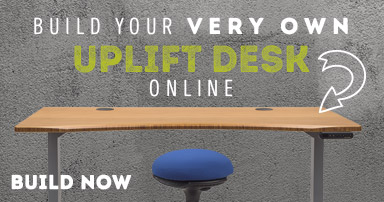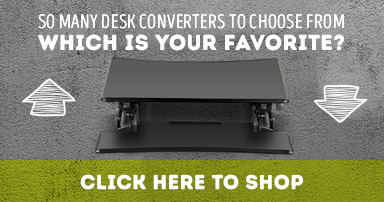Anti-Fatigue Floor Mats for the Home and Office
Posted by Human Solution on Nov 11th 2008
With the public awareness of ergonomic benefits on the rise, many people are seeking to incorporate anti-fatigue flooor mats into their home or office. We are all familiar with these mats if we’ve ever stepped inside a restaurant kitchen or noticed the black square our bagger stands on at the super market, but how can they be used to benefit our lives?
Anti-fatigue mats are essentially foam, gel, or rubber mats that help to absorb impact and more evenly distribute your weight. This helps to reduce fatigue while standing over extended periods. The commercial and industrial markets dominate anti-fatigue sales so an explanation of their home use is hard to find. Some of the most frequent mat calls I field are questions from the home user. We now see these mats going into masseuse studios or hobbyist workshops, and magazines like Dwell are loaded with advertisements for kitchen anti-fatigue floor mats. So how can you benefit from this technology in your own home or business?
Let’s take the example of the kitchen mat. In my own kitchen I have an island that I use for rinsing off vegetables and dishes, and handling most of my cooking prep. On the occasion that I spend an hour or two preparing dinner it is nice to have something other than a hardwood floor to stand on. My knees feel better and my heels don’t tend to hurt as much. If I were preparing an entire Thanksgiving feast I would probably feel some significant relief in my lower back as well. So when outfitting my kitchen with an appropriate anti-fatigue mat I need to consider the following four points: 1. The thicker the better Anti-fatigue mats are not cheap, (hence the Dwell magazine advertisements) and as you add thickness to the mat it naturally becomes more expensive. However this is a situation where bigger certainly is better, and you actually do get what you pay for. If you’re going to buy a mat for your own use, buy the thickest mat you can afford in order to reap the greatest benefit.
2. Factor in industrial sizing tolerances For the time being, even the mats intended for kitchen use are often cut and sized to industrial tolerances. That means figure your sizing needs in ballpark numbers. Mats can vary in final size by 2-3 inches, so if my kitchen island cannot accommodate a mat larger than 4 feet 8 inches I would probably want to purchase a 4 foot mat instead of a 5 foot. If I keep in mind that my 2 foot by 4 foot mat could arrive a couple inches longer or shorter I will be able to avoid purchasing a mat that won’t fit into my desired space. 3. Mats do not work with chairs I have had several Doctors call hoping to line their entire employee reception office with anti-fatigue mats. While this is a great gesture by a very considerate boss, chair casters and glides not only move sluggishly over thick mats, but also will punch holes in the vinyl tops over time. Place mats where you or your employees will be standing, like in front of the copy machine, and leave the seating areas alone. 4. Are you working in a slippery environment? If you’re messy in the kitchen, or maybe you’re putting this mat in a garage where there is grease and other chemicals then designer anti-fatigue mats may not be your best choice. Instead consider purchasing an anti-fatigue mat for wet areas.
And there you have it. A quick primer on purchasing an anti-fatigue floor mat for your home, workshop, or office. If you have any questions when configuring your space we are always here to help.




